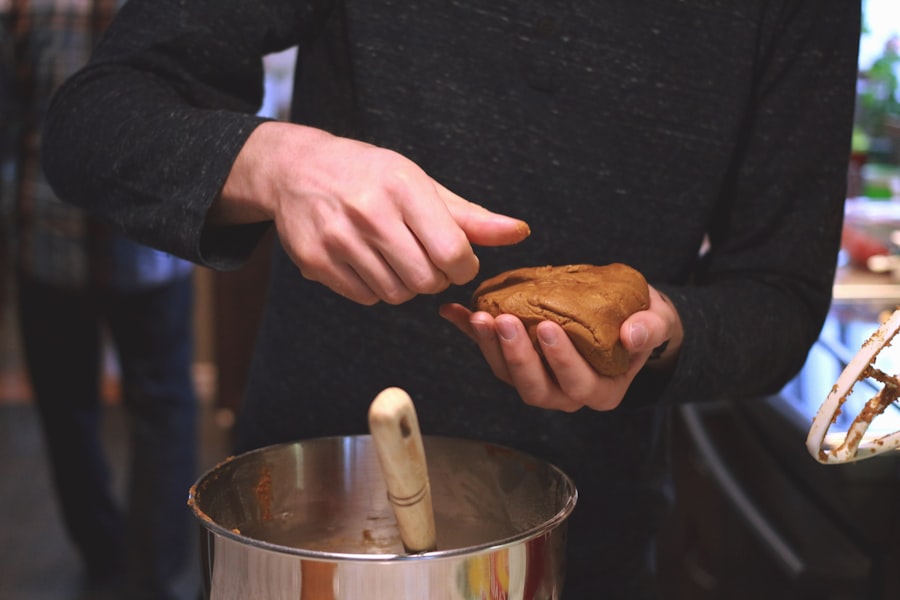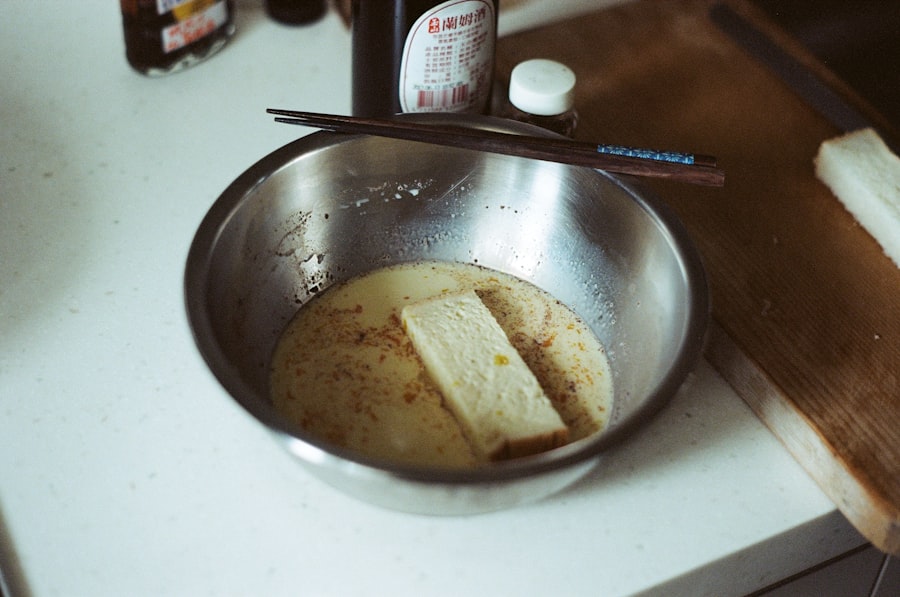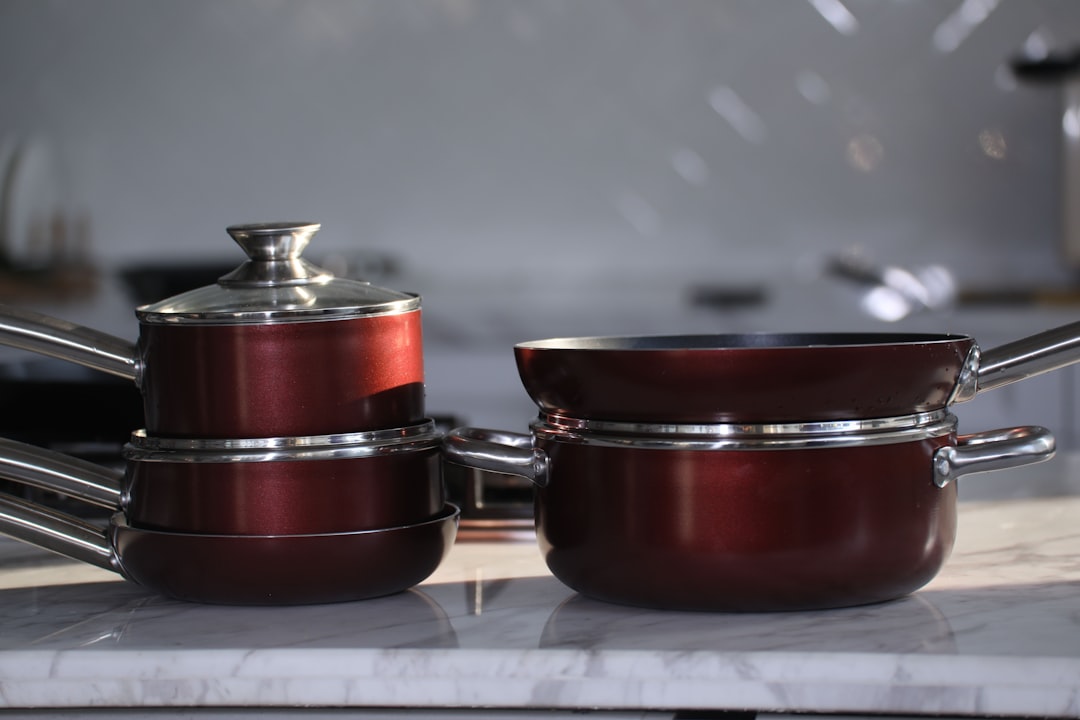When you step into your kitchen, the sight of gleaming nonstick pans may evoke a sense of ease and convenience. These culinary tools have become staples in many households, celebrated for their ability to cook food with minimal oil and facilitate effortless cleanup. The allure of nonstick pans lies in their promise of healthier cooking and the joy of preparing meals without the frustration of food sticking to the surface.
However, as you reach for that trusty skillet, it’s essential to understand the materials that make it nonstick and the implications they may have on your health and safety. Nonstick pans have evolved significantly since their inception, with various coatings designed to enhance their performance. While they offer undeniable benefits, such as reducing the need for added fats and oils, they also raise questions about their long-term safety.
As you navigate the world of cookware, it’s crucial to be informed about what lies beneath that shiny surface. This article will delve into the chemicals used in nonstick coatings, the associated health risks, and practical tips for safe usage, ensuring that you can enjoy your cooking experience without compromising your well-being.
Key Takeaways
- Nonstick pans often contain chemicals like PFOA, which may pose health risks.
- Exposure to PFOA has been linked to potential adverse health effects in studies.
- Using nonstick pans safely involves avoiding high temperatures and proper maintenance.
- Alternatives to nonstick pans include stainless steel and cast iron cookware.
- Pets can be at risk from fumes released by overheated nonstick pans.
Chemicals Used in Nonstick Coatings
The magic behind nonstick pans often comes from a chemical known as polytetrafluoroethylene (PTFE), commonly recognized by the brand name Teflon. This synthetic polymer is renowned for its remarkable ability to repel water and grease, making it an ideal choice for cookware. When you cook with a PTFE-coated pan, you benefit from its smooth surface that allows food to slide off easily, reducing the need for excessive oil or butter.
However, it’s important to note that not all nonstick coatings are created equal; some may contain additional chemicals that can pose risks. In recent years, concerns have emerged regarding perfluoroalkyl and polyfluoroalkyl substances (PFAS), a group of man-made chemicals that includes PFOA (perfluorooctanoic acid). While PFOA has been largely phased out of production due to health concerns, other PFAS compounds may still be present in some nonstick products.
As you consider your cookware options, it’s wise to research the specific materials used in the nonstick coatings of the pans you choose. Understanding these chemicals can empower you to make informed decisions about your kitchenware.
Health Risks Associated with Nonstick Pans

As you enjoy the convenience of nonstick pans, it’s essential to be aware of potential health risks associated with their use. One of the primary concerns revolves around the release of toxic fumes when nonstick cookware is overheated. When PTFE is heated beyond its recommended temperature—typically around 500°F (260°C)—it can begin to break down and release harmful particles into the air.
These fumes can cause flu-like symptoms in humans and can be particularly dangerous for pet birds, which are highly sensitive to airborne toxins.
Research has suggested a potential link between these substances and various health issues, including hormonal disruptions, immune system effects, and even certain types of cancer.
As you consider your cooking habits, it’s crucial to weigh these risks against the convenience offered by nonstick pans. Being informed allows you to make choices that prioritize both your health and culinary enjoyment.
Potential Effects of PFOA Exposure
| Potential Effect | Description | Observed Population | Reference Level (ng/mL) | Notes |
|---|---|---|---|---|
| Increased Cholesterol | Elevated total cholesterol and LDL cholesterol levels | Adults with occupational exposure | >5 | Consistent association in epidemiological studies |
| Immune System Effects | Reduced vaccine antibody response and immune suppression | Children and adults | 1-10 | Observed at low to moderate exposure levels |
| Developmental Effects | Low birth weight and developmental delays | Infants born to exposed mothers | Varies | Associations reported but causality not fully established |
| Liver Toxicity | Increased liver enzymes and hepatomegaly | Animal studies and some human data | High exposure levels | Primarily observed in high-dose animal studies |
| Cancer Risk | Possible increased risk of kidney and testicular cancer | Highly exposed workers | Elevated serum levels | Classified as possibly carcinogenic to humans |
PFOA exposure has garnered significant attention due to its persistence in the environment and potential health implications. Although PFOA has been largely eliminated from many consumer products, its legacy lingers in the form of contamination in water supplies and food sources. If you’ve used nonstick cookware containing PFOA in the past, it’s possible that traces of this chemical could still be present in your body.
Studies have indicated that PFOA exposure may be linked to various health issues, including elevated cholesterol levels, liver damage, and developmental problems in children. As you reflect on your own exposure history, it’s important to consider how PFOA may have impacted your health or that of your family members. While regulatory measures have reduced its prevalence in consumer goods, understanding the potential effects of past exposure can help you take proactive steps toward minimizing future risks.
Staying informed about ongoing research and emerging guidelines regarding PFOA can empower you to make choices that prioritize your well-being.
Studies on the Health Effects of Nonstick Pans
Numerous studies have sought to investigate the health effects associated with nonstick cookware and its chemical components. Research has indicated that prolonged exposure to PFAS chemicals may lead to adverse health outcomes, prompting scientists to delve deeper into their potential impacts on human health. For instance, some studies have suggested a correlation between PFAS exposure and increased risk factors for chronic diseases such as kidney disease and thyroid dysfunction.
As you consider these findings, it’s essential to recognize that research is ongoing, and new information continues to emerge. While some studies highlight potential risks associated with nonstick pans, others emphasize the importance of proper usage and maintenance in mitigating these concerns. By staying informed about current research trends and recommendations, you can make educated decisions about your cookware choices while prioritizing your health.
Tips for Safe Use of Nonstick Pans

To maximize the benefits of nonstick pans while minimizing potential risks, adopting safe usage practices is crucial. First and foremost, avoid using metal utensils on nonstick surfaces, as they can scratch and damage the coating over time. Instead, opt for silicone or wooden utensils that are gentle on the surface while still allowing you to cook effectively.
Additionally, always use low to medium heat settings when cooking with nonstick pans; high temperatures can lead to overheating and release harmful fumes. Another important tip is to ensure proper ventilation while cooking. Opening windows or using an exhaust fan can help dissipate any fumes that may arise during cooking.
Furthermore, consider investing in high-quality nonstick cookware that is free from PFOA and other harmful chemicals. Many manufacturers now offer safer alternatives that provide the same convenience without compromising your health. By implementing these practices, you can enjoy cooking with nonstick pans while prioritizing safety.
Alternatives to Nonstick Pans
If you’re concerned about the potential risks associated with nonstick pans but still want efficient cooking options, there are several alternatives worth considering. Stainless steel cookware is a popular choice due to its durability and versatility.
Cast iron cookware is another fantastic alternative that offers natural nonstick properties when seasoned correctly. With proper care, cast iron pans can last a lifetime and even improve with age. Additionally, ceramic-coated cookware has gained popularity as a safer option free from traditional nonstick chemicals.
These alternatives provide various cooking experiences while allowing you to avoid potential health risks associated with conventional nonstick pans.
Proper Care and Maintenance of Nonstick Pans
To extend the lifespan of your nonstick pans and ensure safe cooking experiences, proper care and maintenance are essential. Start by handwashing your nonstick cookware with mild dish soap and a soft sponge; avoid abrasive cleaners or scouring pads that can damage the coating. After washing, dry your pans thoroughly before storing them to prevent moisture buildup that could lead to deterioration.
Additionally, consider seasoning your nonstick pans occasionally by applying a thin layer of oil before use. This practice can help maintain their nonstick properties over time while enhancing their performance. When storing your nonstick cookware, avoid stacking them directly on top of each other without protection; using pan protectors or cloths between them can prevent scratches and prolong their lifespan.
Safe Cooking Temperatures for Nonstick Pans
Understanding safe cooking temperatures is crucial when using nonstick pans to minimize health risks associated with overheating. Generally, it’s advisable to keep cooking temperatures below 500°F (260°C) when using PTFE-coated cookware. Cooking at lower temperatures not only helps preserve the integrity of the coating but also reduces the risk of releasing harmful fumes into the air.
When sautéing or frying foods, aim for medium heat settings rather than high heat. This approach allows for even cooking without compromising safety. If you notice any signs of smoke or unusual odors while cooking, it’s best to remove the pan from heat immediately and allow it to cool down before resuming cooking at a lower temperature.
Potential Risks for Pets from Nonstick Pans
As a pet owner, it’s essential to consider how nonstick cookware may impact your furry friends as well. Birds are particularly sensitive to fumes released from overheated nonstick pans; exposure can lead to serious respiratory issues or even death in extreme cases. If you have pet birds in your home, it’s advisable to avoid using nonstick cookware altogether or ensure they are kept in a separate area during cooking.
For other pets like dogs and cats, while they may not be as sensitive as birds, it’s still wise to practice caution when using nonstick pans. Ensure proper ventilation while cooking and monitor your pets’ behavior during meal preparation. By being mindful of how your cooking habits may affect your pets’ health, you can create a safer environment for all members of your household.
Conclusion and Recommendations
In conclusion, while nonstick pans offer undeniable convenience in the kitchen, it’s crucial to remain informed about their potential risks and safe usage practices. Understanding the chemicals used in nonstick coatings and their associated health implications empowers you to make educated choices about your cookware options. By adopting safe cooking practices, exploring alternatives like stainless steel or cast iron cookware, and ensuring proper care and maintenance of your nonstick pans, you can enjoy a healthier cooking experience.
As you navigate your culinary journey, prioritize safety by staying updated on ongoing research regarding nonstick cookware and its effects on health. By making informed decisions today, you can create a kitchen environment that promotes both delicious meals and well-being for yourself and your loved ones—human or otherwise.
Recent discussions around the health effects of nonstick pans have raised concerns about the chemicals used in their production, particularly perfluoroalkyl substances (PFAS). For a deeper understanding of this topic, you can read more in the article on Freaky Science, which explores the potential risks associated with these popular kitchen items. Check it out here: Freaky Science.
WATCH THIS! The Forever Chemicals: How Your Nonstick Pan Gave You Cancer
FAQs
Are nonstick pans safe to use for cooking?
Nonstick pans are generally safe to use when used according to the manufacturer’s instructions. However, overheating nonstick pans can release toxic fumes, so it is important to avoid cooking at very high temperatures.
What chemicals are commonly found in nonstick coatings?
Most nonstick pans are coated with polytetrafluoroethylene (PTFE), commonly known as Teflon. Some older or cheaper pans may contain perfluorooctanoic acid (PFOA), which has been largely phased out due to health concerns.
Can nonstick pans release harmful substances when heated?
Yes, when nonstick pans are overheated (above 500°F or 260°C), the coating can break down and release fumes that may cause flu-like symptoms in humans, known as “polymer fume fever,” and can be fatal to pet birds.
Is there a risk of chemical exposure from using nonstick pans?
Under normal cooking conditions, exposure to chemicals from nonstick pans is minimal. The risk increases if the pan is scratched, damaged, or overheated, which can cause the coating to degrade.
How can I minimize health risks when using nonstick pans?
To minimize risks, avoid cooking on high heat, do not preheat an empty pan, use wooden or silicone utensils to prevent scratching, and replace pans that have damaged or peeling coatings.
Are there safer alternatives to traditional nonstick pans?
Yes, alternatives include ceramic-coated pans, stainless steel, cast iron, and anodized aluminum pans, which do not use PTFE coatings and have different safety profiles.
Do nonstick pans affect the nutritional quality of food?
Nonstick pans do not significantly affect the nutritional content of food. They can reduce the need for added fats or oils, which may be beneficial for some diets.
Can nonstick pans cause long-term health problems?
There is limited evidence linking properly used nonstick pans to long-term health problems. Concerns mainly arise from exposure to PFOA, which has been mostly eliminated from modern nonstick coatings.
What should I do if I accidentally overheat a nonstick pan?
If a nonstick pan is overheated, ventilate the area immediately by opening windows and turning on fans. Avoid inhaling fumes and remove pets, especially birds, from the area.
How do I properly care for nonstick pans to ensure safety?
Use low to medium heat, avoid metal utensils, hand wash with mild detergent, and store carefully to prevent scratches. Replace pans when the coating shows signs of wear or damage.
